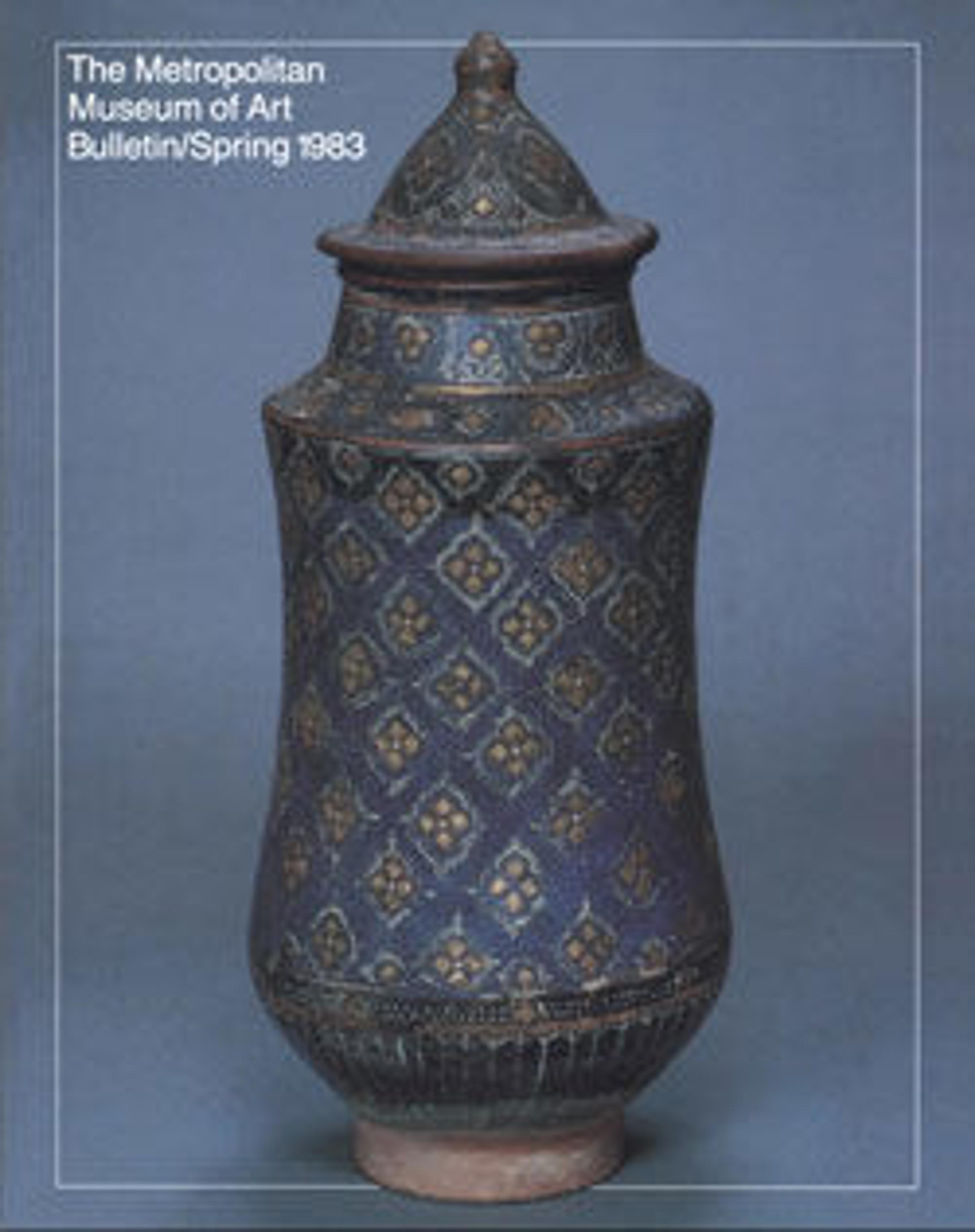Shaped Tiles in the 'Cuerda Seca' Technique
A brilliant but short‑lived episode in the history of Anatolian ceramic production was the appearance of tiles decorated in the so‑called cuerda seca ("dry cord") technique. In the cuerda seca process, thin bands of waxy resist maintain color separation between glazes during firing, but leave behind "dry cords" of unglazed tile. This technique seems to have been introduced to Turkey from Iran as early as the fourteenth century. These tiles are also distinguished by their curving shape, recalling their original placement—probably on the exterior of the polylobed tower of the Mevlana Turbesi (Tomb of Rumi) in Konya.
Artwork Details
- Title: Shaped Tiles in the 'Cuerda Seca' Technique
- Date: late 14th century
- Geography: Attributed to Turkey, Konya
- Medium: Stonepaste; polychrome glaze within black wax resist outlines (cuerda seca technique)
- Dimensions: Tile a: H. 18 13/16 in. (47.8 cm)
W. 11 1/16 in. (28.1 cm)
Wt. 23 lbs. (10.4 kg)
Tile b: H. 18 1/2 in. (47 cm)
W. 10 7/8 in. (27.6 cm)
Wt. 19 lbs. (8.6 kg) - Classification: Ceramics-Tiles
- Credit Line: Rogers Fund, 1908
- Object Number: 08.185a, b
- Curatorial Department: Islamic Art
More Artwork
Research Resources
The Met provides unparalleled resources for research and welcomes an international community of students and scholars. The Met's Open Access API is where creators and researchers can connect to the The Met collection. Open Access data and public domain images are available for unrestricted commercial and noncommercial use without permission or fee.
To request images under copyright and other restrictions, please use this Image Request form.
Feedback
We continue to research and examine historical and cultural context for objects in The Met collection. If you have comments or questions about this object record, please contact us using the form below. The Museum looks forward to receiving your comments.
